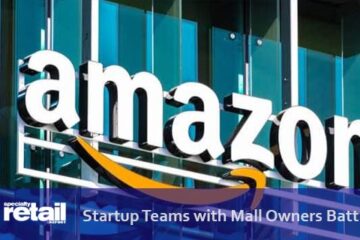Mobile Methods
As shopping centers are fine-tuning their mobile marketing strategies, here’s a look at some methods that have been tried and tested.
Duffy C. Weir
Mobile marketing and social media are helping shopping center customers make all kinds of decisions about purchases, events schedules and even where to park. For example, Best Buy has developed a customer service program that encourages employees to manage online customer service questions via Twitter. This service, dubbed “Twelpforce,” promises rapid and efficient delivery of customer service.
In a rapidly changing social media world, such marketing techniques are gaining increasing traction. Retailers are often surprised how affordable mobile marketing programs can be. The analytical capabilities of mobile marketing programs give retailers the ability to track data in real time, make changes if needed, and measure results to make sure programs are in line with specific business goals.
Jeff Hasen, chief marketing officer at Hipcricket, a mobile marketing firm that produces interactive campaigns says that mobile marketing is an excellent way to engage and stay connected with customers. There are many different ways to get started, Hasen points out, but the easiest method, and the one with the largest reach, is SMS text messaging. Text messaging offers a number of options including mobile coupons, Text 2 Win contests, and more.
For example, Mall of America in Bloomington, MN, uses SMS texting to energize their entertainment events. Management encourages teens to send text messages and have their names appear on a large video screen during performances.
Mall of America’s mobile methods
At Mall of America, mobile marketing is still evolving as management figures out what works and what doesn’t. Jill Renslow, director of business development for the center, says the mall has used a couple of interesting programs in the past year. Management experimented with a tagging technology whereby, using a smartphone, the user took a picture of a bar code—like the printed bar code found on grocery store items. This bar code would then link the user’s phone to rich content—maps, demographics, and research data—about a specific property.
For a prospective tenant, this was a quick way to access information about a shopping center. This integrated program brought together the customer—in this case the prospective retailer—to create a dialog about leasing space in the property.
Mall of America also had a sponsorship/marketing program with Phillips Electronics that assisted customers to navigate their way through the center’s parking garages. By texting a number provided on a sign in the garage, drivers were able to directionally recall where they parked.
Additionally, the center used Twitter last December to communicate parking information to last-minute holiday shoppers hoping to find available parking spaces during the busiest season of the year.
Foursquare, a mobile phone-based GPS application that encourages people to connect with each other and local venues, rewards visitors for “checking in” by offering specials to customers at participating retailers, restaurants or venues.
Foursquare tracks a marketer’s performance of its specials for free. Mall of America has jumped on the Foursquare bandwagon and reserved its name as a venue. The center knows who is checking in (to the center) and is currently developing a Mall of America landing page on Foursquare. “We are constantly trying to educate our retailers about these new tools, especially [those] who can offer special deals to patrons,” Renslow says. The great thing for users of this technology is the backend analytics. “We know who is opting in and opting out and it all gets tabulated for us,” says the business development manager who uses this data to understand what promotions work best for customers.
Renslow’s team is also working on other apps for smart phones to provide customers with rich content about new stores, center discounts and movie schedules inside the center.
Sharing best practices
In July, Madison Marquette, a Washington D.C.-based retail real estate firm, launched a web site, called “Center Social” for the real estate industry. “Our sponsorship of ‘Center Social’ is aimed at leveraging the experience and best practices of the entire industry to better understand how we can all use social media to increase consumer spending at a time when economic realities continue to challenge our centers,” says Kurt Ivey, senior vice president of communications and marketing at the company. The website includes reports, case studies, presentations and best practices and will be updated in the months ahead. Alexander Babbage, an Atlanta-based market research firm is co-sponsor of the website.
Madison Marquette recently launched an iPhone app for Asbury Park, a lifestyle/entertainment center on the boardwalk in Asbury Park, New Jersey. According to Ivey, customers use the app to find out about upcoming events. “It helps customers manage their trip while they are there,” Ivey says. While the app is specific to Asbury Park, there are things like the directory and maps that can be applied across the portfolio, Ivey adds.
Related social media
While not directly mobile marketing (unless customers are checking Facebook and Twitter on their smart phones), Developer’s Diversified new marketing program is also worth mentioning. The company has launched an integrated online and in-center social media campaign for 25 centers in their portfolio. The program, called ShopStar, uses Facebook and Twitter to communicate with loyal shoppers and learn how to make their shopping experience better.
Many developers such as Weingarten, Simon Properties and Westfield are using Facebook and/or Twitter as a social platform to connect customers and retailers to the shopping center. Several have used Facebook fan comments as “ammunition” to persuade retailers to open a store in a center. According to the Center Social website, King of Prussia Mall near Philadelphia, ranked number one of ten (2Q 2010) Facebook centers with over 25,000 fans and The Grove in Los Angeles had the highest number of Twitter followers (2Q 2010).
More work ahead
Brian Hayashi is the founder of ConnectMe 360, a digital services company specializing in building and managing local business directories over the mobile phone. He says the take-home message is that the use of mobile marketing is increasing and it’s hard to ignore. But, he points out usage is not evenly spread across the country. “Foursquare may hit one million ‘check-ins’ but only in certain regions of the country. You may not get the numbers in Minneapolis that you would in San Francisco.” With the frenetic pace consumers go about getting information today from the Internet and the cell phone, the challenge is integrating the marketing message across multiple platforms.
While developers are doing one-off experimental programs many are still trying to figure how mobile marketing fits into a center’s overall marketing program. Over time, collecting information on how consumers are using mobile marketing will help judge the true value of this new technology. Meanwhile, as shopping centers marketing budgets continue to shrink, less expensive mobile programs—especially free ones like Foursquare—are expected to continue to spur interest.
Maps and Marketing
Point Inside, a free app for smart phones, links up-to-date mall maps to targeted mobile marketing.
Poornima Apte
In malls across the country, the traditional mall directory has been getting a makeover. Point Inside, a free downloadable app for smart phones, provides its consumers with updated maps and relevant information for malls that participate.
In addition, retailers in malls can use the app to broadcast promotions to shoppers—potentially increasing traffic and sales.
At its core, Point Inside is a mapping platform. Its key strength is that Point Inside has the indoor location and map information to allow customers to know what’s around them in indoor environments. “It’s used to find the locations of things that are important to you in indoor spaces, whether that’s a particular store in a mall, the nearest restroom, the location of your connecting gate in the airport, or even what restaurants are along the way,” says Brian Wilson, vice president of marketing at Bellevue, WA-based Point Inside.
“Point Inside has a specific utility and vision: to fill in the ‘gray space’ of traditional outdoor maps. You’ll notice, if you use other mapping applications (e.g., Google Maps, Bing, etc.) to try to find a store in a mall, chances are the pin that’s dropped will be somewhere on the curb, because the latitude/longitude they have in their databases is associated with the address of the mall, not the individual store in the mall,” Wilson points out. “Contrarily, Point Inside knows the exact lat/long of every store, ATM, restroom, etc. in the mall, so we can drop the pin exactly where the store is.”
Furthermore as the mall landscape changes, with new stores coming in, mall managers can themselves update the information and keep the maps current.
Advertising platform
Especially attractive to mall retailers is the ability of Point Inside to broadcast relevant promotions to customers. Specialty retailers and mall managers have many advertising venues to choose from, but at a time when consumers are constantly barraged with advertising, targeted advertising can yield effective results. This is one of the premises of the Point Inside app.
Malls can promote events through the app and so can individual stores. Through the app’s backend “Promotion Editor,” retailers can fill in specific details about the promotion such as percent off, length of promotion and other information. If the retailer has multiple locations, the promotion can be dragged and dropped to all or some of them.
Point Inside can map any type of indoor venue including airports and convention centers. Plans for a version, specifically tailored for Specialty Retail Report’s tradeshow, SPREE, are being formulated.
As of the end of July, over 625 malls and over 70 airports were included in the Point Inside map database.
“What sets Point Inside apart is the ability to create indoor maps very quickly, at scale, as well as the ability to map various types of venues,” Wilson says.
“This map creation capability, along with the available content management platform that allows customers to associate any content (promotions, events, product information, etc.) to their locations on the map, is unique to the industry,” he adds.
For more information, please visit pointinside.com.

An Eye on Sales
An advertising platform in the mall can also deliver targeted ads to customers’ mobile phones.
Bernadette Starzee
With many malls totaling one million square feet or more, it’s easy for a cart or kiosk to get lost in the shuffle. Advertising in common areas is a way for specialty retailers to extend their “storefront,” to direct traffic their way.
EYE, an Australian company whose U.S. headquarters is in New York, is an advertising company that provides businesses with the opportunity to display their message in malls, airports, roadside billboards and other public settings. The company has regional sales offices in several cities around the United States.
EYE offers both backlit posters and digital displays in the common areas of 250 malls across the U.S., in addition to other countries. The posters display static images, while their digital counterparts are seven-second spots that allow for moving images. Ads, which may be purchased nationally or locally, are often contracted for by retailers in partnership with a brand that they sell, or for the entire store, says David Gibbs, chief executive officer for EYE USA. “If passersby see an ad for a store, it may make them decide they want to go there,” Gibbs says. “Or they may say, ‘I’m looking for jeans. I didn’t think to look there, but now I will.’”
“Because it’s common for them to move around, carts often use the ads in part to communicate their location, such as “opposite American Eagle,” Gibbs adds.
Tied to mobile marketing
Relative to posters, digital ads, which typically run for seven seconds, offer several bonuses. For instance, the message may change every day, part of the day, or according to the day of the week; or two or three ads may be cycled in and out.
One of the more interesting capabilities is mobile proximity marketing, in which consumers who are near a display will automatically receive messages on their mobile device.
To receive the content, the device must be able to access the Internet. Rich content can include wallpapers and coupons, and the user can forward content to friends.
The system is both “push and pull,” in that a retailer can send messages as well as accept and respond to user requests for more information. For instance, a cart or kiosk retailer can send more details about its location within the mall or its product offerings.
Some phones will receive a message as the users walk by, asking them to opt in, while other devices will require that users go to a web page on their smart phone to view the content. The display unit can include a message directing passersby to turn on the Wi-Fi.
The system, which personalizes ads by location, works across all platforms and mobile carriers, and users don’t have to download external applications. However, consumers must opt-in on a one-time basis to receive these messages—special offers—on their smart phone.
EYE Corp. offers a wide range of packages and pricing based on the locations purchased. A large retailer can opt for a national or regional buy, while a single-location retailer can choose to advertise solely in its mall.
For more information, please visit eyecorp.com.





